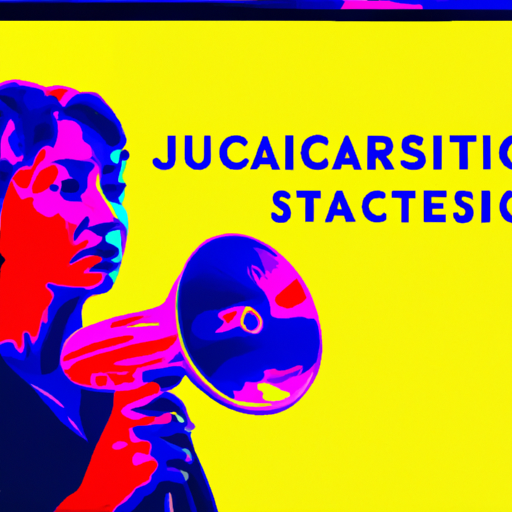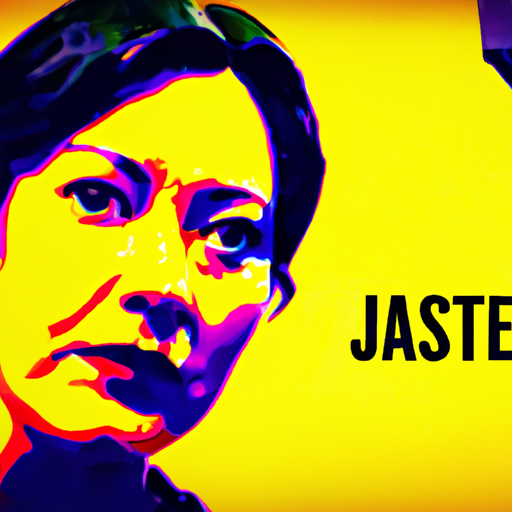
-
Table of Contents
Social Justice Illustration: Amplifying Voices

Social justice is a concept that has gained significant attention in recent years. It refers to the fair and equitable distribution of resources, opportunities, and privileges within a society. While social justice encompasses a wide range of issues, including economic inequality, racial discrimination, and gender inequality, this article will focus specifically on the role of social justice illustration in amplifying voices and promoting positive change.
The Power of Visual Communication
Visual communication has always been a powerful tool for conveying messages and evoking emotions. Images have the ability to transcend language barriers and reach a wide audience. In the context of social justice, illustrations can serve as a catalyst for change by shedding light on important issues and giving a voice to marginalized communities.
One of the key strengths of social justice illustration is its ability to simplify complex ideas and make them accessible to a broader audience. By using visual metaphors and symbols, illustrators can distill complex social issues into easily understandable images. This allows people who may not have prior knowledge or understanding of a particular issue to engage with it and develop empathy.
Amplifying Marginalized Voices
One of the primary goals of social justice illustration is to amplify the voices of marginalized communities. Historically, these communities have been underrepresented or misrepresented in mainstream media. By creating illustrations that depict their experiences and struggles, illustrators can give these communities a platform to share their stories and perspectives.
For example, the Black Lives Matter movement has gained significant traction in recent years, shedding light on systemic racism and police brutality. Illustrators have played a crucial role in amplifying the voices of Black individuals and communities by creating powerful and thought-provoking illustrations. These illustrations have been widely shared on social media platforms, reaching millions of people and sparking important conversations about racial injustice.
Similarly, social justice illustrators have also focused on issues such as LGBTQ+ rights, gender equality, and indigenous rights. By creating illustrations that depict the experiences and struggles of these communities, illustrators can raise awareness and foster empathy among a broader audience.
Case Studies: The Impact of Social Justice Illustration
Several case studies highlight the impact of social justice illustration in promoting positive change. One such example is the work of Molly Crabapple, an artist and activist known for her illustrations depicting the experiences of marginalized communities.
In 2014, Crabapple collaborated with journalist Marwan Hisham to create a series of illustrations documenting the Syrian civil war. These illustrations, which were published in Vanity Fair, provided a visual narrative of the war and its impact on Syrian civilians. The illustrations humanized the conflict and shed light on the experiences of those affected by it, ultimately raising awareness and generating support for Syrian refugees.
Another notable case study is the work of Favianna Rodriguez, an artist and activist who focuses on issues of immigration, racial justice, and climate change. Rodriguez’s illustrations often feature vibrant colors and powerful imagery, drawing attention to the struggles faced by marginalized communities.
One of Rodriguez’s most impactful projects is the “Migration is Beautiful” campaign, which aims to challenge negative stereotypes and narratives surrounding immigration. Through her illustrations, Rodriguez celebrates the contributions of immigrants to society and highlights the resilience and strength of immigrant communities.
The Role of Social Media
Social media platforms have played a crucial role in the dissemination of social justice illustrations. Platforms like Instagram, Twitter, and Facebook have provided illustrators with a global audience and a means to share their work directly with the public.
Hashtags such as #BlackLivesMatter, #MeToo, and #NoDAPL have become powerful tools for organizing and amplifying social justice movements. Illustrators often use these hashtags to share their work and contribute to ongoing conversations about social justice issues.
Additionally, social media platforms have allowed for the creation of online communities centered around social justice illustration. These communities provide a space for illustrators to connect, collaborate, and support one another. They also serve as a source of inspiration and encouragement, fostering the growth and development of social justice illustration as a movement.
Conclusion
Social justice illustration has emerged as a powerful tool for amplifying voices and promoting positive change. Through visual communication, illustrators can simplify complex social issues, raise awareness, and foster empathy among a broader audience. By giving a platform to marginalized communities, social justice illustration challenges existing power structures and narratives, ultimately contributing to a more equitable and just society.
As social media continues to evolve and play an increasingly important role in our lives, the impact of social justice illustration is likely to grow. By harnessing the power of visual communication and leveraging the reach of social media platforms, illustrators have the potential to create lasting change and shape public discourse on social justice issues.
